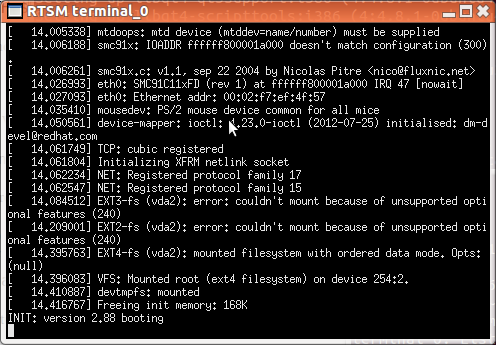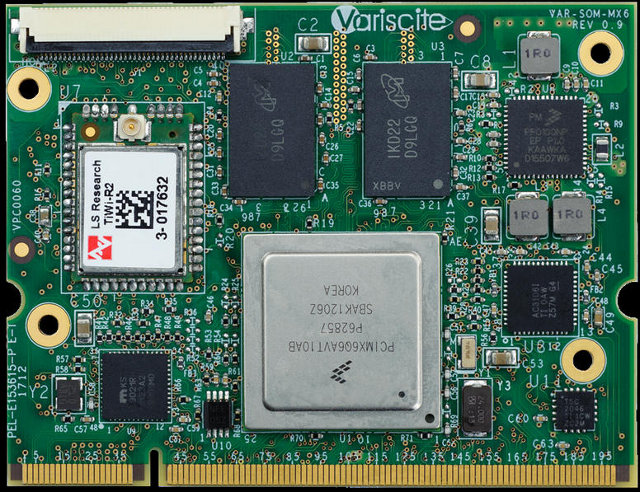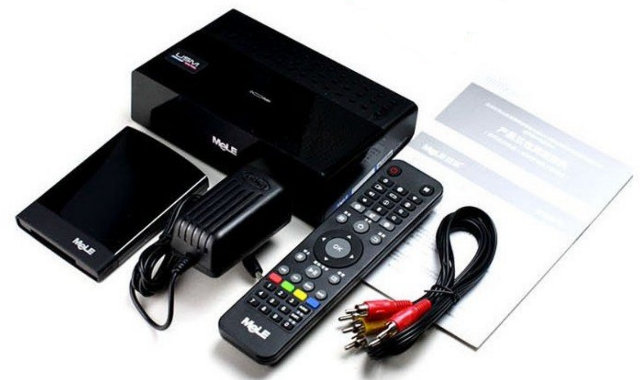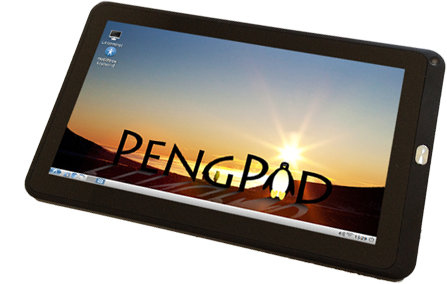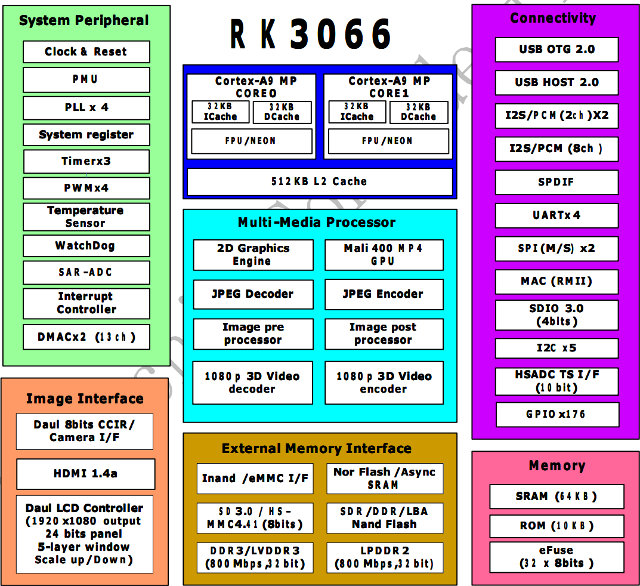Freescale i.MX6 series was first announced in January 2011, and there have been delays due to problem with the silicon, but now the i.MX6 processors are finally in mass production, and lots of different products are using this SoC. The latest product I found is ULP-COM-sAMX6i by Kontron which is a series of computers on module based on ULP-COM (Ultra Low Power) standard featuring Freescale i.MX6 solo, dual and quad processors. Those commercial and industrial grade modules target markets such as transportation, medical and military. Here are the technical specifications of the modules: CPU – Freescale i.MX 6 Single, Dual and Quad Core ARM Cortex-A9 @ 800 MHz (Industrial grade), 1 GHz and 1.2 GHz System Memory – Up to 2 GB DDR3 Storage – Optional onBoard NAND/eMMC up to 64GB Graphics / Video – Dual Display, HD 1080p Decode/Encode and 2D/3D acceleration Video Output Resolution Parallel LCD 18/24 bit […]
Learn How to Write a Driver for Linux 3.x With The Linux Driver Template
A Linux Driver Template (LDT) has been published to help new Linux kernel developers writing hardware device drivers. Constantine Shulyupin posted the Linux Driver Template (LDT) on the Linux mailing list in order to merge it into the mainline Linux kernel. The code can be used as as a starting point for new drivers, and shows how to use several Linux facilities such as module, platform driver, file operations (read/write, mmap, ioctl, blocking and nonblocking mode, polling), kfifo, completion, interrupt, tasklet, work, kthread, timer, simple misc device, multiple char devices, Device Model, configfs, UART, hardware loopback, software loopback and ftracer. This sample has been added to other device drivers samples in eLinux.org. And if you want to learn further there’s always the Linux driver bible: “Linux Device Drivers, Third Edition” which can be downloaded for free as PDF, although it’s for 2.6.10 kernel and many parts may not be up-to […]
XBMC for Linux on AllWinner A10 Devices? It Works! (Sort of)
Following the lack of support by AllWinner for the video engine libraries (CedarX), I had more or less given up on hope XBMC for Linux would ever run properly on AllWinner A10/A13 hardware. But recently, I found out some progress had been made using existing libs, and saw the Pengpod Tablet video showing XBMC running in Linux fairly smoothly. So I decided to cross-compile XBMC by following the instructions available at http://linux-sunxi.org/XBMC and trying to run it in Linaro ALIP 12.04 rootfs in my Mele A1000. Finally, I managed to cross-compile XBMC, but the performance was very poor in the GUI (6 to 12 fps) and I was unable to play videos and my serial console was flooded with messages like:
|
1 |
[DISP] not supported image0 pixel sequence:216 in img_sw_para_to_reg |
[Update: I managed to have XBMC Linux running & playing videos on Mele A1000 by using j1nx image (rootfs + kernel). I would first exhibit the exact same […]
Getting Started with 64-bit ARM Development: Hello World and Linux on ARMv8 Fast Models
At the end of last year, ARM announced ARMv8, the first ARM 64-bit ARM archtecture, and last week at ARM Techcon 2012, ARM announced the first ARMv8 cores: Cortex A53 and A57. But since there’s no silicon at the moment, what if you wanted to develop code running on ARMv8 before the hardware is available? The answer is: Fast Models, a Virtual Platform (VP) to accelerate software development. This is especially important for ARMv8 since hardware is not expected to be available for another year. In this post, I’ll first show how to run “Hello World!” in ARMv8 fast models, then we’ll run ARM Linux 64-Bit (Aarch64) in the virtual platform. ARMv8 Foundation Model In order allow the developer’s community to program for ARMv8 (Cortex A53/A57 cores), ARM has made ARMv8 Foundation Model, a virtual platform, available free of charge. This v8 Foundation model provides a basic ARMv8 platform environment […]
Variscite VAR-SOM-MX6 Freescale i.MX 6 Solo, Dual and Quad System on Modules Start at $59
Variscite has unveiled a new series of system on modules powered by Freescale i.MX6 Solo, Dual, DualLite and Quad processors with 512 to 2048 MB DDR3 RAM, and 128 to 1024MB SLC NAND Flash. Here are the modules key features: SoC – Freescale i.MX 6 series SoC (Single/Dual /Quad ARM® Cortex™-A9 Core, 1.2 Ghz) System Memory • Up to 16 Gb DDR3 RAM Storage – Up to 8 Gb NAND Flash for storage memory/boot Video Output: 2 x LVDS display interface HDMI V1.4 i nterface 1 x MIPI DSI Touch panel interface Camera – Parallel & serial camera interface (CSI) Connectivity On-board 10/100/1000 Mbps Ethernet PHY WLAN (802.11 b/g/n) Bluetooth 2.1 + EDR USB – 1 x USB 2.0 host, 1 x OTG Audio – Stereo line -In/out, digital & analog microphone, and S/PDIF In/Out Other interfaces: 2 x SD/MMC Serial interfaces ( SPI , I2C, UART, I2S,) 2x CAN […]
$100 Mele A1000G / A2000G Android Media Players with 1GB RAM and 8GB Flash
I’ve been asked by several people when there would be a Mele with 1GB RAM, well the time is now, with the Mele A1000G and Mele A2000G. Both appear to be based on the previous Mele A1000 and Mele A2000 set-top boxes, but feature 1 GB RAM and 8 GB Flash instead of 512 MB RAM and 4 GB Flash. Here are Mele A1000G & Mele A2000G Specifications: SoC – AllWinner A10 Cortex A8 processor @ 1GHz System Memory – 1 GB DDR3 Storage: 8GB NAND Flash SD card slot (up to 32 GB) Connectivity: Wi-Fi – 802.11 b/g 10/100 MB Ethernet USB – 3 USB Host ports SATA Interface for 2.5″ HDD Video Output – HDMI, composite and VGA. Audio Output – RCA stereo output and optical out (SPDIF) Audio Formats – MP3 / WMA / WAV / OGG / FLAC / MKA Video Formats – TS / M2TS […]
PengPod 700 & 1000 – Linux Tablets Based on AllWinner A10
There are plenty of tablet based on AllWinner A10 and A13 processors, but all of them run Android, and you are out of luck if you want to run Linux on your tablet, unless you hack this yourself. But this is about to change as PengPod will launch 2 tablets and 1 mini PC running Linux from NAND flash or micro SD card: PengPod 700 – 7″ tablet with Allwinner A10, 1GB RAM and 8GB Flash PengPod 1000 – 10″ tablet with AllWinner A10, 1GB RAM and 8GB Flash PengStick – AllWinner A10 mini PC with 1GB RAM and 4 GB Flash The table below gives more detailed specifications and comparison of the three devices. Device PengPod1000 PengPod700 PengStick Type Tablet Tablet TV Stick CPU Allwinner A10 AllWinner A10 AllWinner A10 Android 4 4 4 Linux 3.0.42 3.0.42 3.0.42 Screen 10” 7” External Resolution 1024×600 800×480 1080i Ram 1GB 1GB […]
Rockchip RK3066/RK30xx Processors Documentation, Source Code and Tools
Rockchip RK3066 (part of RK30xx family) is a Chinese dual ARM Cortex A9 SoC targeting multimedia products such as tablets (e.g. Cube U30GT), mini PC (e.g UG802, MK808) and in theory set-top boxes, but I can’t find any products based on this Rockchip processor. It seems mini PCs/ HDMI TV sticks have taken over this market. RK3066 Processor The processor features two ARM Cortex A9 clocked at up to 1.6 Ghz with a quad core Mali-400MP GPU. It can support 1080p (3D) encoding/decoding, provides HDMI 1.4a, VGA, composite, component and LVDS video outputs (Dual display support), USB 2.0 Host and OTG ports, a MAC interface (Ethernet), and much more… Here are the key features of Rockchip RK3066 processor: Dual Core A9 + Quad Core Mali-400MP GPU 2 banks, 8/16 bit Nor flash / SRAM interface 8 banks, 8/16 bit async NAND flash, LBA NAND flash and 8-bit sync ONFI NAND […]




